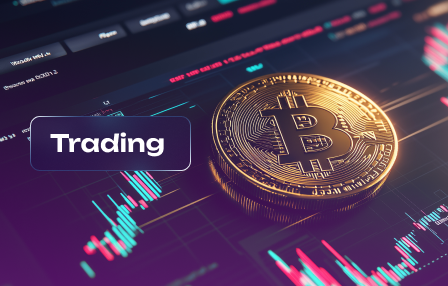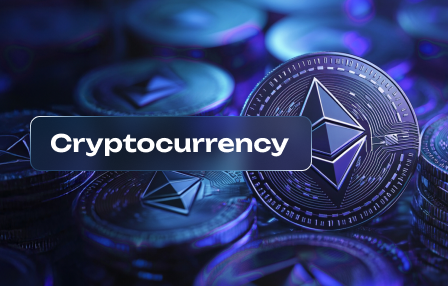The Rise of USDT and USDC in OTC Payments
February 26, 2025
Consider integrating stablecoins like USDT and USDC for seamless settlements in your trading operations. These digital assets have emerged as frontrunners in the realm of over-the-counter dealings, facilitating swift and secure financial exchanges.
The rise of these cryptocurrencies reflects a robust trend towards mainstream acceptance. Their adoption is propelled by the demand for stable value during exchanges, mitigating volatility that often plagues other digital currencies. As OTC markets evolve, leveraging USDT and USDC can significantly enhance liquidity and speed.
Both assets provide a bridge between traditional finance and cryptocurrency ecosystems, allowing institutions to conduct larger volumes with less friction. By utilizing these tokens, participants can bypass conventional banking hurdles, ensuring transactions remain private while capitalizing on the efficiency that blockchain technology offers.
Engaging with USDT and USDC in settlement processes not only streamlines workflows but also positions businesses at the forefront of financial innovation. Explore this strategy to elevate your operational capabilities in the ever-expanding digital finance landscape.
USDT vs USDC Comparison
To maximize efficiency in cross-border transfers, choose the right stablecoin. Here’s a breakdown to guide your selection:
- Liquidity: USDT generally boasts higher trading volumes across exchanges, ensuring quick conversions. USDC is gaining traction but lags slightly behind in liquidity.
- Regulatory Compliance: USDC prioritizes regulatory adherence, offering transparency and regular audits, which can build trust among institutional users. USDT has faced scrutiny, which may impact its perceived reliability.
- Usage in Transactions: Both assets are popular for direct transactions; however, USDC is increasingly favored for treasury management in enterprises due to its compliance focus.
- Market Adoption: Adoption rates reveal USDT’s longstanding presence in the market, making it a go-to for immediate needs. USDC’s rise reflects a growing preference for regulated options.
Selecting between these stablecoins depends on specific requirements: rapid access versus regulatory assurance. Consider transaction speed, reliability, and compliance needs when deciding which cryptocurrency best fits your payment strategy.
Key Market Trends Observed
Focus on increasing adoption of stablecoins in diverse payment scenarios. Users are prioritizing fast, reliable methods for settling large sums, leading to a noticeable rise in the use of these cryptocurrencies.
Liquidity has become a significant factor driving choices in the marketplace. High liquidity means quicker transactions and minimized slippage, making it an attractive option for participants looking for seamless exchanges.
OTC deals show a clear preference for stablecoins over traditional fiat currencies. This shift suggests a growing trust in digital assets as preferred mediums for high-value trades.
Data indicates that the volume of these cryptocurrency transfers is escalating, revealing a strong demand among institutional investors. These entities are increasingly integrating stablecoins into their financial strategies.
The comparison between different stablecoins demonstrates that factors like transaction speed and network fees play crucial roles in selection processes. Observing this trend can assist new entrants in navigating the competitive landscape effectively.
Market analysts should monitor regulatory developments closely. As government policies evolve, they may significantly impact the dynamics surrounding stablecoin usage and its acceptance in various sectors.
Impact on Transaction Costs
Reducing costs for cryptocurrency transfers is achievable through increasing liquidity and adoption of stablecoins like USDC and USDT. As these currencies become more prevalent, they enhance the efficiency of cross-border exchanges, leading to lower fees associated with traditional banking systems.
Transaction costs can vary significantly based on market conditions. With rising demand for these digital assets, the availability of liquidity improves, facilitating quicker and cheaper conversions. This trend results in substantial savings for businesses and individuals utilizing these currencies for commercial purposes.
The decline in processing fees is not just a benefit for large-scale enterprises; small businesses also gain access to affordable solutions that enable them to compete on a global scale. Utilizing USDC or USDT enhances their ability to transact efficiently without incurring high overhead costs.
As the ecosystem expands, platforms integrating these stablecoins will likely leverage technology to further optimize transaction processes. This trend suggests an ongoing reduction in costs as competition among service providers grows stronger, ultimately benefiting users across various sectors.
Investors should closely monitor transaction fees when engaging with these cryptocurrencies, as fluctuations can impact overall profitability. Adopting strategies that involve timing transactions during periods of low fees can maximize returns.
Regulatory Considerations for Users
Users engaging in the cryptocurrency space should prioritize compliance with local laws to mitigate risks. Understand the regulatory framework governing assets like stablecoins, as non-compliance can lead to significant penalties.
Be aware of Anti-Money Laundering (AML) and Know Your Customer (KYC) requirements imposed by authorities. These regulations often necessitate verification processes that vary by jurisdiction, impacting how individuals conduct their transactions.
Tax implications are also critical. Many regions classify cryptocurrencies as property, leading to capital gains tax on profits from exchanges or trades. Keep detailed records of all transactions for accurate reporting.
Here’s a summary of key regulatory aspects:
As adoption continues, staying informed about changes in legislation is paramount. Engage with legal experts specialized in cryptocurrency to navigate complexities and safeguard your interests in this dynamic environment.



